First of all, wash your beans so that they are clean and free from dirt, bits etc.

Then, bring to the boil at least 6 litres of water per 500gms of beans, preferably in a large pot with a steamer/basket type arrangement. The water must be at least half way up the basket, so that all the beans are submerged when placed in the water.
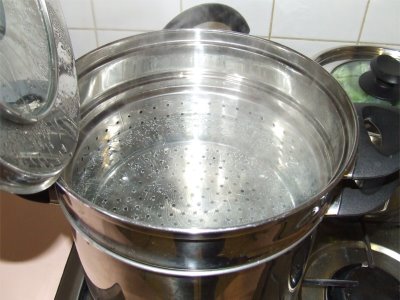
Before the water has come to the boil, make sure you have another bowl of cold water to place the beans in after blanching. The beans have to be cooled rapidly to stop the cooking process. That way, you can preserve the freshness without cooking them all the way through.
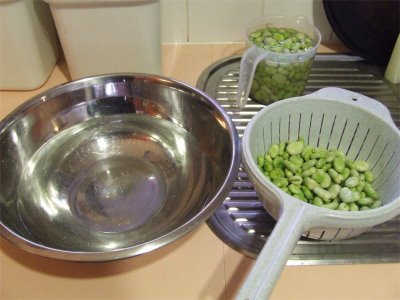 Once the water is at a rapid boil, place the beans into the pot
Once the water is at a rapid boil, place the beans into the pot
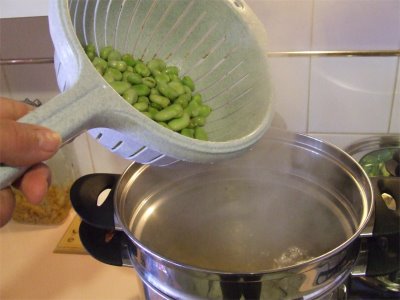
Boil the beans for three minutes only. Keep an eye on the time, because any longer and the beans start to cook. You are aiming to kill the enzymes that make the beans rot, not to cook them outright.
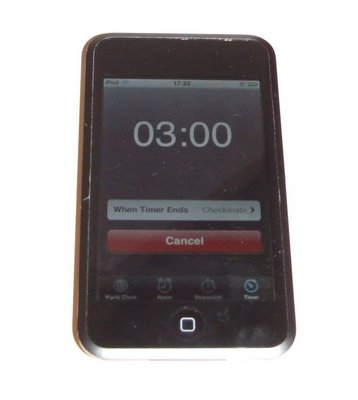 When the three minutes are complete, then remove the beans from the pot as quick as you can, and immerse them into the cold water you had placed aside earlier.
When the three minutes are complete, then remove the beans from the pot as quick as you can, and immerse them into the cold water you had placed aside earlier.

The beans will cool down. If you are making another batch, make sure you change the not so cold water bowl for fresh cold water, because you are still attempting to cool the beans down as quickly as possible. Once cool to touch (about 1 minute) then strain and place in a freezer bag.
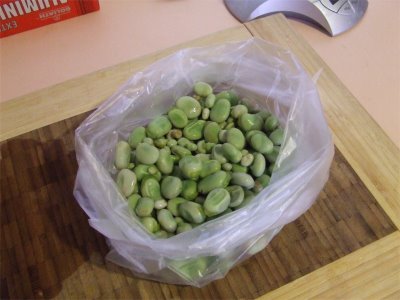
Once in the freezer bag, tie it off and place in the freezer as quickly as possible.

If you are freezing other types of vegetables, the blanching time will vary with the size or weight of the produce. Just google “how to blanch vegetables for freezing” and you should find the right time for whatever you want to freeze.
I managed to get four meals out of my 1.9 kg of broad beans. We ate some tonight with our roast which were very tasty and I froze the other three portions. I hope this has been educational.
Bon appetite!

Hey Gav….very nice. I use a little salt in my blanching water so that I”m not tempted to use salt when cooking it also locks in the flavour of the beans or vegies…was taught that trick by one of my employers in a resturant
xoxox
Thanks Sis, but I don’t use salt at all in cooking. I find that herbs and spices are enough to keep my tastebuds tingling!
Like Teena, I also use salt when I blanch because I was told it locks in the flavour more but apparently has little effect on the final taste when they’re eventually cooked. Apart from blanching and when boiling potatoes, I rarely use salt in cooking and when I do, it’s always Maldon Sea Salt (much better for you than horrid table salt).
Yum! I also use salt.
There’s a good discussion about why to use salt here:
http://freeculinaryschool.com/the-basics-of-blanching/
To summarise, salting the water prevents hydrogen atoms from replacing magnesium atoms in chlorophyll molecules, which would turn them grey.
So salting keeps the vegies green and retains their flavour.
Found you via the “Buddy’s Friday” link 🙂
Thanks for the post, but now there is a salt/no salt discussion going on here which doesn’t looks set to end anytime soon, lol.
This is very timely as we are just starting to harvest. I have just bought an extra freezer and can’t wait to see it full by the end of the season.
Margaret
Excellent guide, the pictures are really good. Here is a good video on blanching that might help you guys
http://www.guidery.com/article/view/how_to_blanch
Cheers
Thanks Gavin, I just blanched and froze a couple of bags of broad beans (I didn’t use salt). I have also done a couple of batches of them in the dehydrator too!
Easy to follow guide Gavin, Thanks. I use a reusable freezer pack (instead of ice cubes) in my cold shock bath – it keeps the bath cold for several blanching batches therefore conserving precious water.
No problem, thanks for the tip!